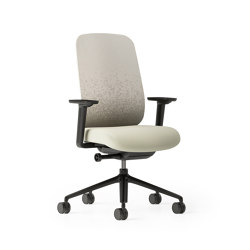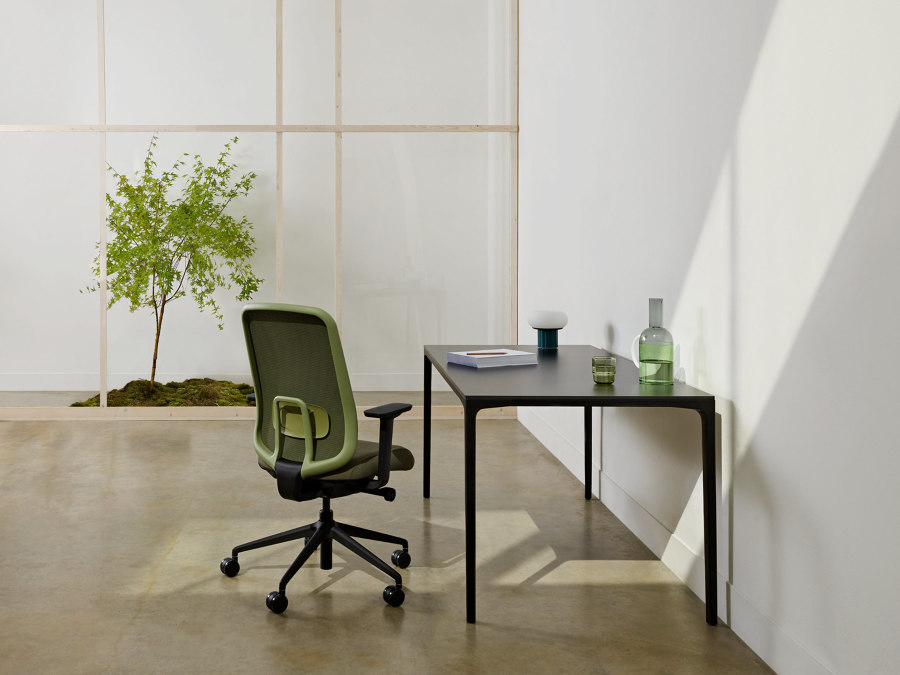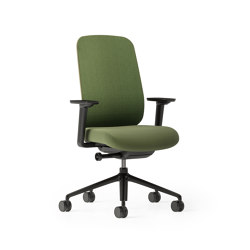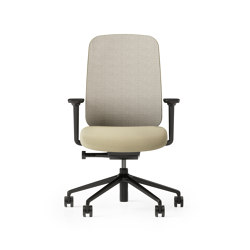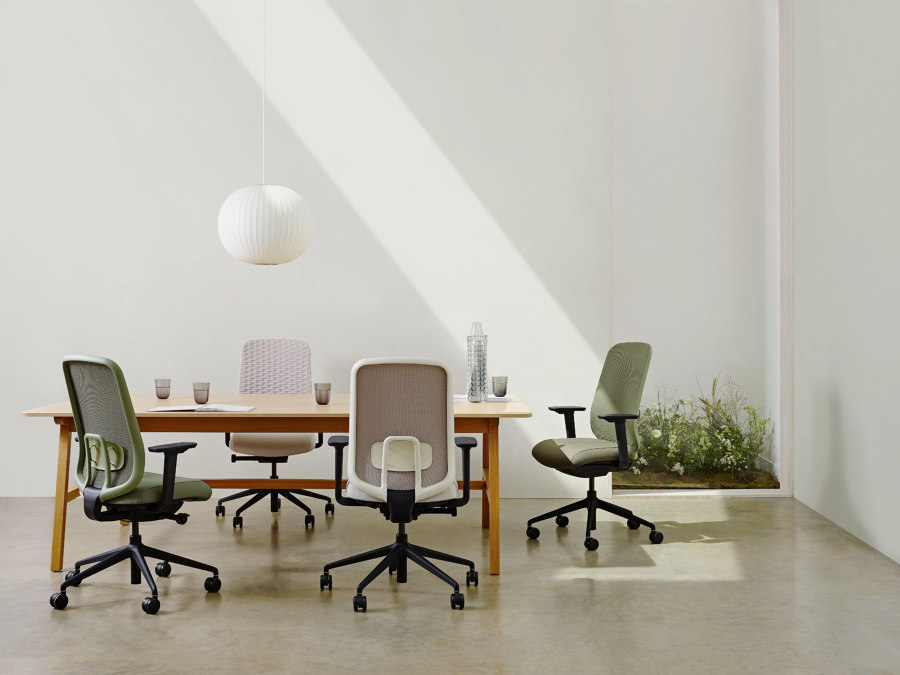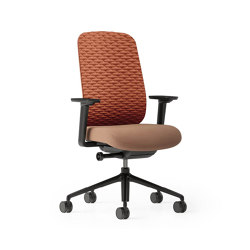Sia by Boss Design: a chair tasked to make changes
Brand story by Emma Moore
West Midlands, United Kingdom
05.04.23
Boss Design's SIA task chair is the British brand's most sustainable to date. Its impressive eco-credentials span the whole lifecycle, from raw-material sourcing to end-of-life disposal.
The Sia task chair has sustainability at the root of every design decision made in its development, from the nature and sourcing of materials, to how it might weather each stage of life
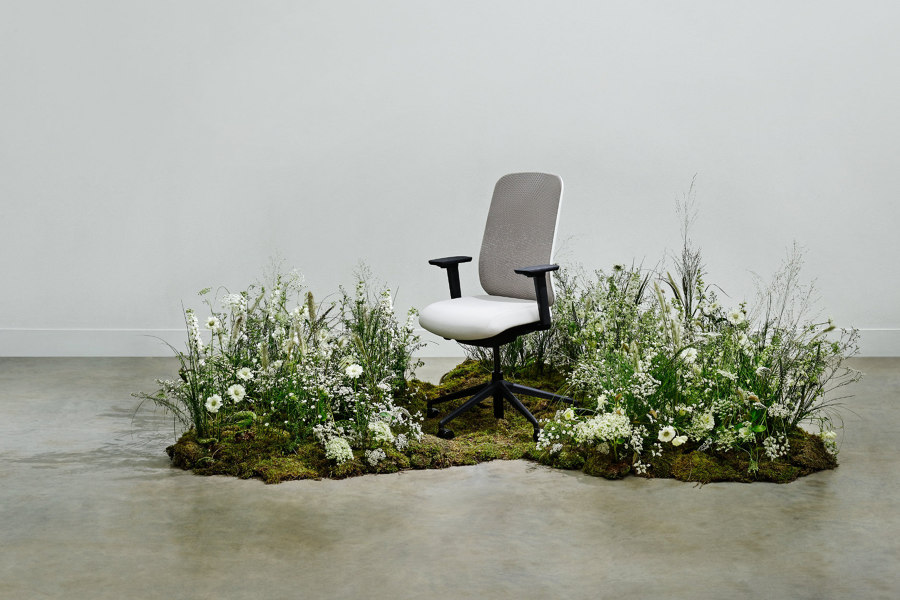
The Sia task chair has sustainability at the root of every design decision made in its development, from the nature and sourcing of materials, to how it might weather each stage of life
×The latest news to flash up as I write is a foreboding ‘act now or it will be too late’. The newly published, eight-year-long review of human intelligence on the climate crisis runs to thousands of pages, but the upshot is that the continuing rise of greenhouse gases is pushing global warming to the point of no return. In the words of the UN Secretary-General, António Guterres 'Our world needs climate action on all fronts: everything, everywhere, all at once.’
As part of the carbon-reducing agenda, Sia’s profile has been shaved down, but attention has been paid to not compromising its aesthetics. The timeless design has creative colour choices built in
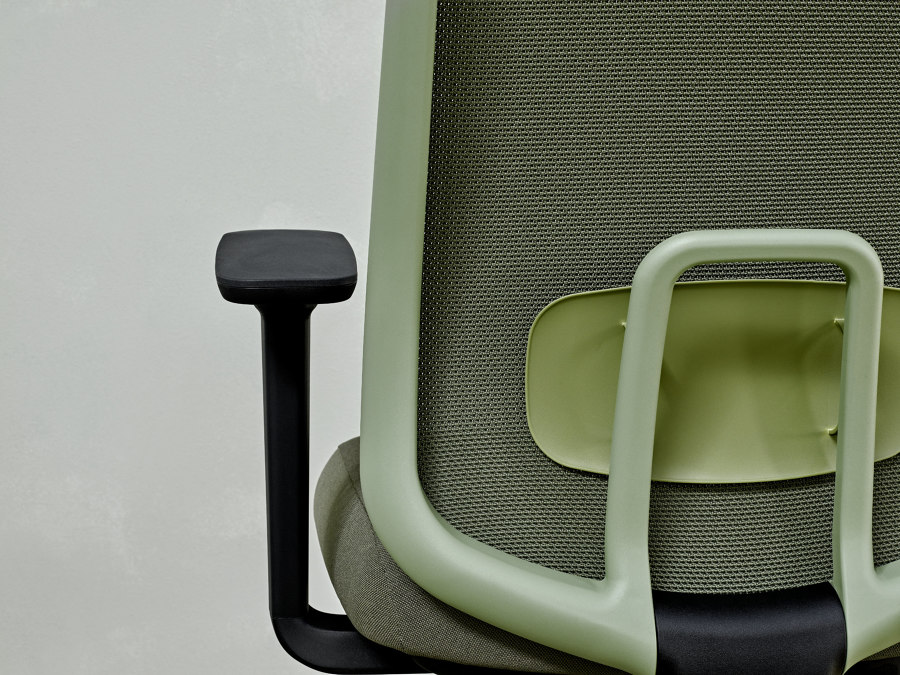
As part of the carbon-reducing agenda, Sia’s profile has been shaved down, but attention has been paid to not compromising its aesthetics. The timeless design has creative colour choices built in
×Time for change
Give or take a few of the words, it sounds a little like the design vision that might once have guided the making of an all-singing task chair. In 2023, however, the ambition for the design of an office chair is markedly different. Ahead of any fancy functionality is the need to shrink, if not extinguish, its adverse impact on the environment. ‘You can’t tickle around the edges. You’ve got to make sustainability a fundamental part of the decision-making process at every stage,’ says Mark Barrell, design director at Boss Design, the British company that has been making high-quality affordable office furniture for 40 years. Sia is Boss Design’s newest task chair and its design is the company’s most sustainable to date. What’s more, the thinking behind it is not only reshaping the way a chair is put together, but the company’s business model.
‘You can’t tickle around the edges. You’ve got to make sustainability a fundamental part of the decision-making process at every stage’
Taking chairs to task
Environmental responsibility is now embedded in the design of offices. Those creating workplaces are chasing decarbonisation goals for clients and prospective tenants, and all elements of office design are expected to play their part in lowering the footprint. With commercial seating historically involving high levels of carbon-loaded virgin plastics, long supply chains, high energy consumption in processes such as injection moulding and a life in fashion lasting just 7-8 years, bringing task chairs into line is no mean feat. It sees furnishing brands vying to raise the percentages of recycled content and reduce the expenditure of energy every which way. Some choose to have the edge by carbon-neutralising their task chairs using offsetting measures. Some are getting more involved in the extended life of a product. It’s not surprising that sustainability credentials of such pieces can be baffling to consumers.
Boss Design’s R&D has found ways to push up the post-consumer plastic content in its parts to 43.1%, while other recycled materials make up a further 27.5% – a total of 70.6% material reuse
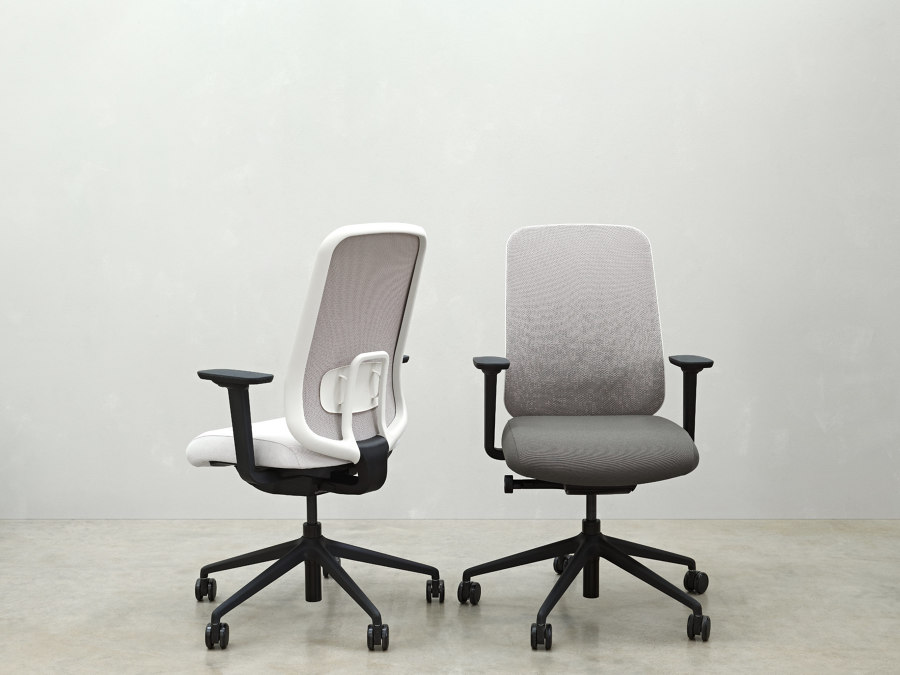
Boss Design’s R&D has found ways to push up the post-consumer plastic content in its parts to 43.1%, while other recycled materials make up a further 27.5% – a total of 70.6% material reuse
×Material gains
Barrell admits it’s extremely complex. ‘One of the things that I expected to be the most obvious thing we could do was increase our use of recycled material granule – especially in injection-moulded plastics – but it turns out that because there’s still a lack of supply in good quality granule, you can end up increasing your carbon footprint by going further to find recycled granule rather than virgin granule because of the processing that’s inherent with that.’ Until recently, Boss primarily used post-industrial plastic waste – for its mechanical strength – but recognising that this is essentially just virgin plastic that didn’t make it through the machine, it is chasing the less readily available post-consumer variety. ‘Post-consumer is the stuff we are interested in – it’s got a story attached, which then hopefully adds value as it makes its way through the manufacturing process and beyond.’
When action is called for, it needs to be on all fronts: everything, everywhere, all at once
For Sia, Barrell found the best source of high-performing post-consumer plastic in Italy, while the UK provides the rest of the chair’s material needs. But first, he slimmed down the profile of the chair to reduce the material required overall. It has a total recycled content of 70.6% and 43.1% of its make-up is post-consumer recycled plastic. All the cutting and sewing of the upholstery and knitting of the mesh back happens in the UK.
No longer just a furniture manufacturer, Boss Design offers a refurbishment service to office owners, so that they can ensure chairs such as Sia will live the longest life possible
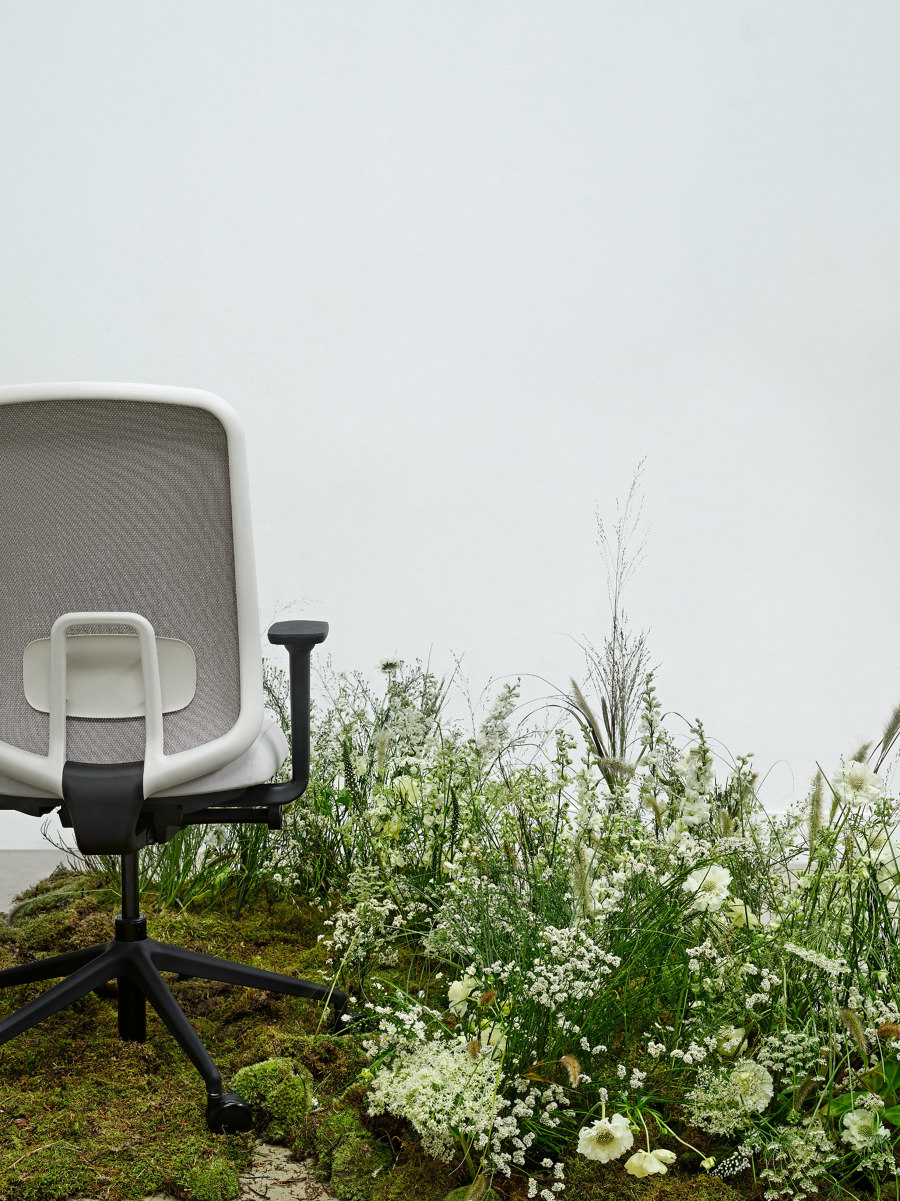
No longer just a furniture manufacturer, Boss Design offers a refurbishment service to office owners, so that they can ensure chairs such as Sia will live the longest life possible
×From furniture maker to service provider
The manufacturing footprint, however, is only part of the clean-up equation – equal emphasis needs to be given to building longevity into a piece through a timeless aesthetic and quality, while simultaneously ensuring the recyclability of the chair and its component parts. This has pushed Barrell’s team to design Sia as a chair that can be disassembled – with little more than an allen key – so that it is easily refurbished with replacement parts and new upholstery when refits come along, and so that eventually at its ultimate demise, each bit can have an afterlife as a recycled part or post-consumer material. Effectively, 99.4% of Sia’s materials can be recycled.
When eight years down the line new colours are trending, Sia can be fitted with new clothes. When eventually it nears its life’s end, parts can be easily disassembled and responsibly recycled
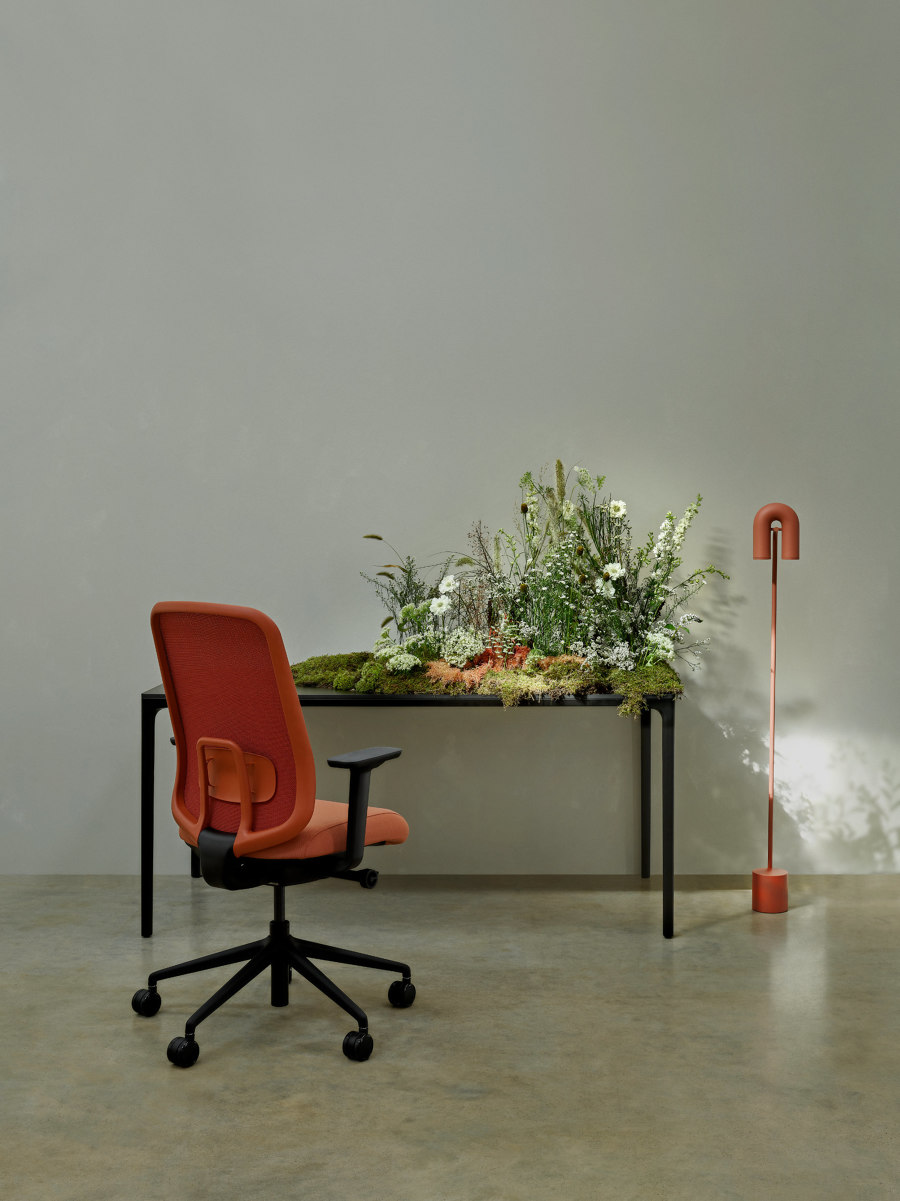
When eight years down the line new colours are trending, Sia can be fitted with new clothes. When eventually it nears its life’s end, parts can be easily disassembled and responsibly recycled
×Boss Design’s offer is now not only manufacturing but service also. It has regular clients – a number of banks, for example – returning to the company to manage their refurbishment programmes once the eight-year cycle is up and a fresh colour scheme required. It also works with Waste to Wonder, an organisation that passes checks on discarded furniture and redistributes it to where it's most needed. Because when action is called for, it needs to be on all fronts: everything, everywhere, all at once.
© Architonic
Head to the Architonic Magazine for more insights on the latest products, trends and practices in architecture and design.


